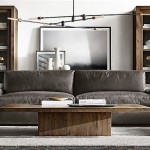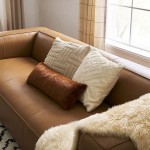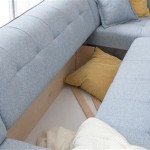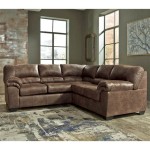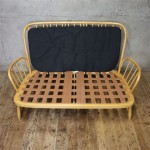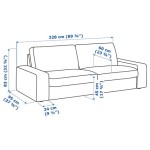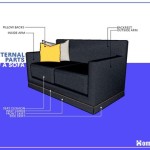Sofa, Loveseat, and Recliner Placement: A Guide to Optimize Comfort and Flow
Arranging furniture effectively is crucial for creating a comfortable and functional living space. Determining the optimal placement of a sofa, loveseat, and recliner is a common challenge, as it involves balancing aesthetics, comfort, and functionality. This guide provides insights into the key considerations for arranging these pieces, ensuring a harmonious and welcoming environment for everyone.
Consider the Room's Shape and Size
The first step is to assess the room's shape and size. This will help determine the best placement of the sofa, loveseat, and recliner while leaving enough space for easy movement and traffic flow. For example, in a square or rectangular room, a symmetrical arrangement with the sofa and loveseat facing each other might be ideal. In a long, narrow room, it might be more effective to place furniture along one wall to maximize space. It's crucial to measure the room and the furniture to ensure that the pieces fit comfortably and don't create a cramped or cluttered feel.
The Focal Point of the Room
Consider the focal point of the room. This could be a fireplace, a large window, or a piece of artwork. You'll want to position the sofa, loveseat, and recliner in a way that draws attention to this feature. For example, you could place the sofa directly in front of the fireplace, or you could arrange the loveseat and recliner on either side of the window to create a cozy reading nook.
Functional Layout and Traffic Flow
It's important to prioritize functionality when placing furniture. Consider how people will move around the room, and ensure that the sofa, loveseat, and recliner are not obstructing walkways or doorways. The positioning should facilitate easy access to furniture, entertainment systems, and other amenities within the room. You might want to create distinct conversational zones within the room, making it more welcoming for guests or family members engaging in activities.
Strategic Placement of the Sofa
The sofa is typically the anchor piece of the living room, and its placement significantly impacts the overall flow and feel. Opt for a position where it invites people to sit and chat. Generally, avoid placing the sofa too close to a wall, as it can feel cramped. Consider using coffee tables and end tables to create space between the sofa and surrounding walls, promoting a more open and inviting atmosphere.
The Power of the Loveseat
The loveseat is typically used for intimate conversations or for creating a comfortable reading spot. It's best placed where it can provide a sense of privacy or intimacy. For example, you could place the loveseat on a side wall or in a corner, away from the main traffic flow of the room. This arrangement allows for a private conversation space while still maintaining a sense of connection to the rest of the room.
Positioning the Recliner
The recliner should be placed strategically to optimize comfort and relaxation. If the room has a view, placing the recliner facing the window allows for optimal enjoyment. It could also be positioned near a reading lamp for a cozy reading corner. Placing it near a coffee table allows easy access to drinks and snacks. Avoid placing the recliner in a heavily trafficked area, as it can disrupt flow and make relaxation difficult.
The Importance of Lighting
Lighting plays a crucial role in overall ambiance and functionality. Consider using a variety of light sources, such as overhead lights, lamps, and sconces. Place lamps near the sofa, loveseat, and recliner to provide adequate lighting for reading or evening conversations. The use of lamps near the seating can create a warm and inviting atmosphere and highlight specific focal points.
Adding Personal Touches
Once the furniture is in place, add personal touches to enhance the room's ambiance. This could involve using throws, pillows, and artwork to reflect your personal style and create a comfortable and welcoming environment. These elements can create a sense of warmth and comfort, while personal touches can bring out the individual character of the room.
Adapting for Multiple Purposes
Remember that living spaces often serve multiple purposes. In a multi-purpose room, consider the flexibility of the furniture arrangement. For example, a sofa bed can provide both seating and sleeping accommodations. This can be particularly useful in smaller spaces where maximizing functionality is essential. Assess the unique needs of the space and select furniture that can adapt to different activities and functions.

Knowing How To Arrange Your New Sofa And Loveseat Can Be Tricky Obviously Things Will Change Depending Livingroom Layout Couch Family Room

Living Room Layouts For Recliner Chairs Mobility Furniture Company

4 Ways To Arrange Your Recliner Sofa Furnishing Tips

Top Tips For Reclining Furniture Arrangement Flemington Dept Blog

How To Arrange Sofa And Loveseat In Small Living Room A Cow

Small Living Room Solutions For Furniture Placement Layout Design Casual Rooms

Living Room Layouts For Recliner Chairs Mobility Furniture Company

Living Room Furniture Layout Guide Plan Ideas Ashley Home

How To Arrange Sofa And Loveseat In Small Living Room A Cow

20 Living Room Furniture Layouts That Make The Most Of Your Space Rectangular Rooms Arrangements Layout

